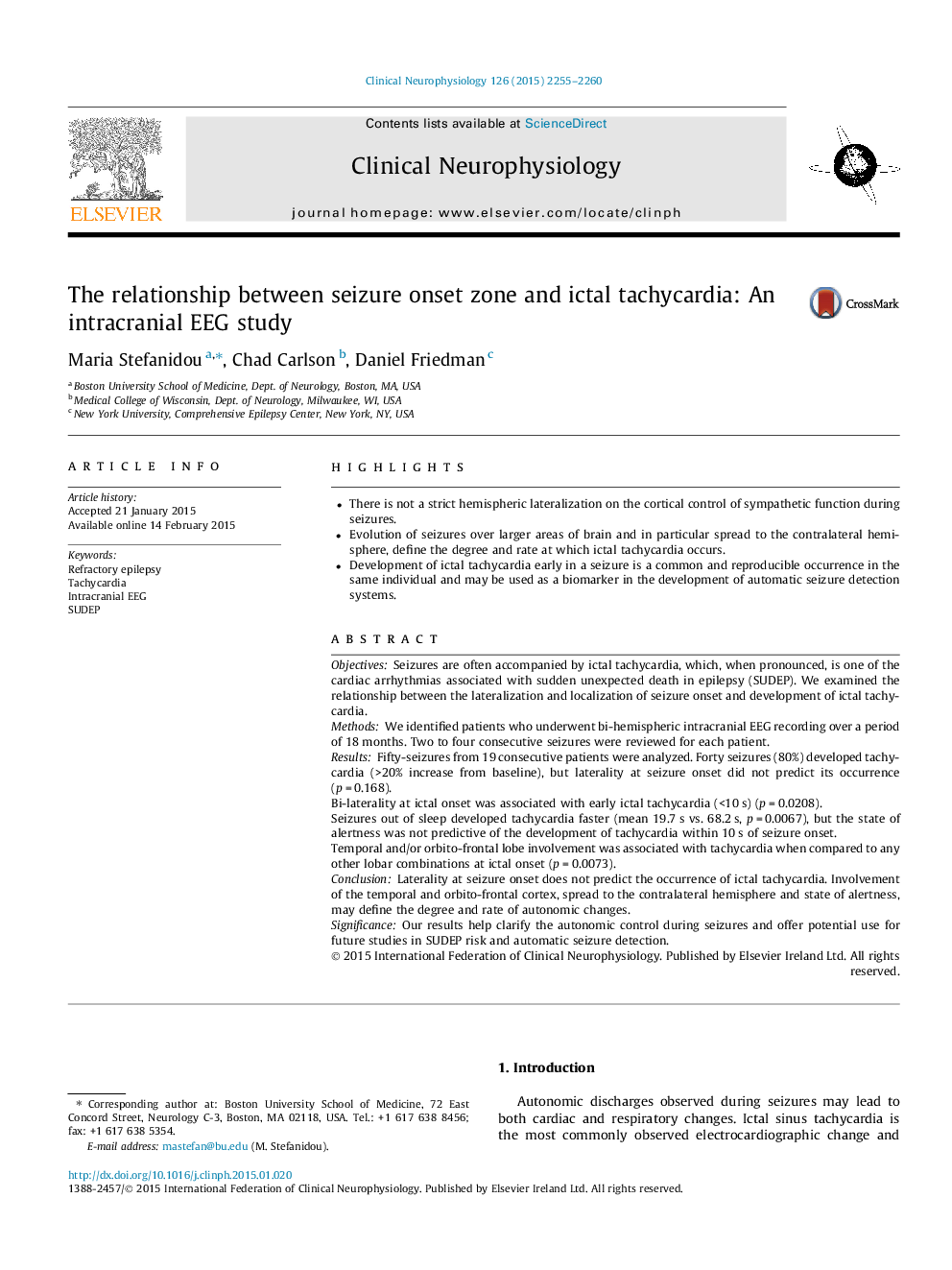| Article ID | Journal | Published Year | Pages | File Type |
|---|---|---|---|---|
| 3043135 | Clinical Neurophysiology | 2015 | 6 Pages |
•There is not a strict hemispheric lateralization on the cortical control of sympathetic function during seizures.•Evolution of seizures over larger areas of brain and in particular spread to the contralateral hemisphere, define the degree and rate at which ictal tachycardia occurs.•Development of ictal tachycardia early in a seizure is a common and reproducible occurrence in the same individual and may be used as a biomarker in the development of automatic seizure detection systems.
ObjectivesSeizures are often accompanied by ictal tachycardia, which, when pronounced, is one of the cardiac arrhythmias associated with sudden unexpected death in epilepsy (SUDEP). We examined the relationship between the lateralization and localization of seizure onset and development of ictal tachycardia.MethodsWe identified patients who underwent bi-hemispheric intracranial EEG recording over a period of 18 months. Two to four consecutive seizures were reviewed for each patient.ResultsFifty-seizures from 19 consecutive patients were analyzed. Forty seizures (80%) developed tachycardia (>20% increase from baseline), but laterality at seizure onset did not predict its occurrence (p = 0.168).Bi-laterality at ictal onset was associated with early ictal tachycardia (<10 s) (p = 0.0208).Seizures out of sleep developed tachycardia faster (mean 19.7 s vs. 68.2 s, p = 0.0067), but the state of alertness was not predictive of the development of tachycardia within 10 s of seizure onset.Temporal and/or orbito-frontal lobe involvement was associated with tachycardia when compared to any other lobar combinations at ictal onset (p = 0.0073).ConclusionLaterality at seizure onset does not predict the occurrence of ictal tachycardia. Involvement of the temporal and orbito-frontal cortex, spread to the contralateral hemisphere and state of alertness, may define the degree and rate of autonomic changes.SignificanceOur results help clarify the autonomic control during seizures and offer potential use for future studies in SUDEP risk and automatic seizure detection.
